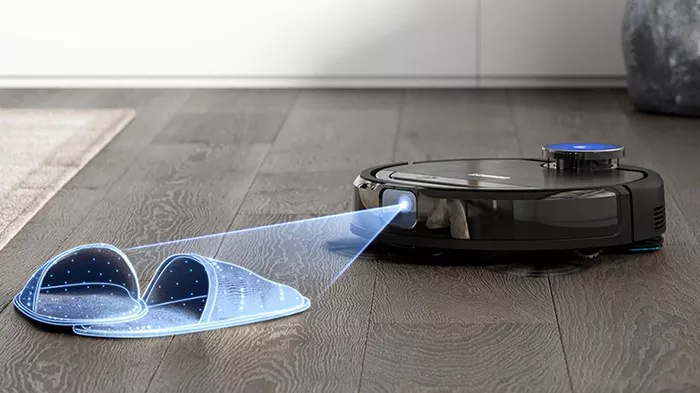Vacuum cleaners have become an indispensable tool in maintaining cleanliness in homes, offices, and various other environments. These devices efficiently suck up dirt, dust, debris, and other unwanted particles from floors and surfaces, leaving them clean and fresh. But how exactly do vacuum cleaners work? In this comprehensive guide, we’ll delve into the intricate mechanisms behind these household essentials.
1. Introduction to Vacuum Cleaners
Before delving into the specifics of how vacuum cleaners operate, let’s first understand their basic components and functions. A typical vacuum cleaner comprises several essential parts, including a motor, fan, filter, dustbin or bag, and various nozzles and attachments.
2. The Suction Process
The fundamental principle behind vacuum cleaners is creating suction to lift dirt and debris off surfaces. This process begins with the motor, which generates airflow. As the motor runs, it powers a fan that draws air into the vacuum cleaner. This airflow creates a low-pressure area inside the device, causing air from the surrounding environment to rush in, along with any loose particles on the floor or surface.
3. Filtration Systems
Once the dirt-laden air is drawn into the vacuum cleaner, it passes through a filtration system designed to trap particles while allowing clean air to pass through. The most common types of filters used in vacuum cleaners include cloth, foam, paper, and high-efficiency particulate air (HEPA) filters. HEPA filters are especially effective at capturing tiny particles like dust mites, pollen, and pet dander, making them ideal for households with allergies or asthma sufferers.
4. Dust Collection
After passing through the filtration system, the clean air is expelled back into the environment, while the trapped dirt and debris are collected in a dustbin or bag. Bagged vacuum cleaners store dirt in disposable bags, whereas bagless models typically use a dustbin that can be emptied and reused. Some advanced vacuum cleaners feature self-sealing bags or hygienic emptying mechanisms to minimize contact with allergens and dust during disposal.
5. Types of Vacuum Cleaners
Vacuum cleaners come in various types to suit different cleaning needs and preferences. These include upright, canister, handheld, stick, and robotic vacuum cleaners. Each type offers unique advantages in terms of maneuverability, reach, and convenience, allowing users to choose the most suitable option for their specific requirements.
6. Power Sources
Vacuum cleaners can be powered by electricity, batteries, or a combination of both. Corded vacuum cleaners rely on mains power for operation, providing consistent suction power throughout the cleaning session. Cordless vacuum cleaners, on the other hand, offer greater flexibility and portability but may have limited runtime depending on battery capacity.
7. Common Features and Attachments
Modern vacuum cleaners often come equipped with various features and attachments to enhance their versatility and effectiveness. These may include adjustable suction settings, brush rollers for carpets, crevice tools for tight spaces, upholstery brushes, and pet hair removal accessories. Some high-end models even incorporate smart technology for automated cleaning routines and remote operation.
8. Maintenance and Care
To ensure optimal performance and longevity, vacuum cleaners require regular maintenance and care. This includes emptying or replacing dustbags or dustbins, cleaning filters, inspecting and clearing blockages from hoses and attachments, and periodically checking for wear and tear on moving parts like brushes and belts. Following manufacturer guidelines and recommendations can help prolong the life of your vacuum cleaner and maintain its efficiency.
Conclusion
In conclusion, vacuum cleaners operate on the principle of creating suction to remove dirt and debris from floors and surfaces. Through a combination of motorized airflow, filtration systems, and dust collection mechanisms, these devices effectively clean various environments, contributing to improved hygiene and comfort. Understanding how vacuum cleaners work can help users make informed decisions when selecting the right model for their cleaning needs and ensure proper maintenance for optimal performance.
FAQs
Q1: How often should I replace the filters in my vacuum cleaner?
A1: The frequency of filter replacement depends on several factors, including the type of filter, usage frequency, and the presence of allergens or pet hair in your home. As a general guideline, it’s advisable to check and clean or replace filters every 3 to 6 months to maintain optimal performance and filtration efficiency.
Q2: Can vacuum cleaners effectively remove pet hair from carpets and upholstery?
A2: Yes, many vacuum cleaners come with specialized attachments and features designed specifically for pet hair removal. Look for models with motorized brush rollers and pet hair attachments to effectively lift and capture pet hair from carpets, upholstery, and other surfaces. Regular vacuuming can help minimize pet hair buildup and reduce allergens in your home.
Q3: Are robotic vacuum cleaners as effective as traditional vacuum cleaners?
A3: Robotic vacuum cleaners offer convenience and automation, but their effectiveness may vary depending on factors such as floor type, layout, and obstacles in the environment. While they can effectively clean hard floors and low-pile carpets, they may struggle with deep cleaning tasks or navigating around cluttered areas. However, advancements in technology continue to improve the performance and capabilities of robotic vacuum cleaners, making them a viable option for many households.

